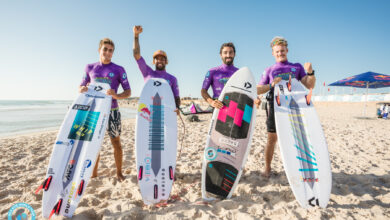10 Best Practices For LRTSJERK

There are many things to consider when planning and designing an effective LRT system. Here are 10 best practices to keep in mind when planning your LRTSJERK: 1. Establish clear goals and objectives for the system. 2. Plan for future growth and expansion. 3. Design the system to be safe, reliable, and efficient. 4. Use the latest technology and innovations. 5. Incorporate user feedback and input. 6. Make the system accessible to all users. 7. Ensure the system is financially viable. 8. Promote sustainability. 9. Manage and operate the system effectively. 10. Continuously improve the system.
Introduction
There is no one-size-fits-all answer when it comes to the best practices for LRTSJERK. However, there are some general guidelines that can help you get started. Here are 10 of the best practices for LRTSJERK: 1. Define your goals and objectives clearly. 2. Develop a solid plan. 3. Set realistic deadlines. 4. Create a budget. 5. Delegate tasks and responsibilities. 6. Stay organized. 7. Be flexible. 8. Communicate regularly. 9. Evaluate your progress regularly. 10. Celebrate your successes.
What is LRTSJERK?
What is LRTSJERK?
LRTSJERK is a performance testing tool that simulates real-world user traffic on web and mobile applications. It is used to identify and diagnose performance issues in order to improve the overall user experience.
Its can simulate thousands of concurrent users from multiple locations around the world. It provides detailed insights into application performance, including response times, errors, and slowdowns.
LRTSJERK is an open source tool that is available for free.
The 10 Best Practices for LRTSJERK
When it comes to setting and achieving goals, it’s important to have a system in place that will help you stay on track. This is especially true when it comes to losing weight and getting in shape.
There are a lot of different weight loss programs out there, but not all of them are created equal. Some are more effective than others, and some are more sustainable in the long run.
The 10 Best Practices for LRTSJERK is a weight loss program that is based on the latest scientific research and is designed to be both effective and sustainable.
Here are the 10 best practices for LRTSJERK:
1. Set realistic goals.
When it comes to weight loss, it’s important to set realistic goals. If you set unrealistic goals, you’re more likely to become discouraged and give up.
2. Find a support group.
Having a support group can be extremely helpful when trying to lose weight. This could be a group of friends, family, or even an online community.
3. Make a plan.
It’s important to have a plan when it comes to losing weight. This plan should include what you’re going to eat, how you’re going to exercise, and how you’re going to stay on track.
4. Avoid fad diets.
Fad diets are not sustainable and can actually be dangerous. Instead of following a fad diet, focus on making healthy changes to your diet that you can stick with for the long term.
5. Get enough sleep.
Getting enough sleep is important for overall health and can also help with weight loss.
6. Drink plenty of water.
Drinking plenty of water is important for overall health and can also help with weight loss.
7. Avoid processed foods.
Processed foods are high in calories and low in nutrients. They are also more likely to cause cravings and overeating.
8. Eat more fruits and vegetables.
Fruits and vegetables are packed with nutrients and fiber. They are also low in calories, which can help with weight loss.
9. Avoid sugary
Best Practices for LRTSJERK
It is important to follow best practices when creating a learning resource to ensure that it is accessible and usable for all learners. Here are 10 best practices to follow when creating a LRTSJERK:
1. Use clear and concise language.
When writing text for a learning resource, it is important to use clear and concise language. This will help to ensure that the resource is accessible and understandable for all learners.
2. Use simple sentence structures.
When writing text for a learning resource, it is important to use simple sentence structures. This will help to ensure that the resource is accessible and understandable for all learners.
3. Use bullet points and lists.
Bullet points and lists can help to break up text and make it easier to read. This will help to ensure that the resource is accessible and understandable for all learners.
4. Use images and diagrams.
Images and diagrams can help to break up text and make it easier to understand. This will help to ensure that the resource is accessible and understandable for all learners.
5. Use audio and video.
Audio and video can be used to provide alternative ways of presenting information. This will help to ensure that the resource is accessible and understandable for all learners.
6. Use headings and subheadings.
Headings and subheadings can help to break up text and make it easier to navigate. This will help to ensure that the resource is accessible and understandable for all learners.
7. Use tables and charts.
Tables and charts can help to present information in a clear and concise way. This will help to ensure that the resource is accessible and understandable for all learners.
8. Use hyperlinks.
Hyperlinks can be used to provide additional information and resources. This will help to ensure that the resource is accessible and understandable for all learners.
9. Use accessibility features.
When creating a learning resource, it is important to consider accessibility features such as text-to-speech, closed captioning, and alt text. This will help to ensure that the resource is accessible and understandable for all learners.
10.
The Importance of LRTSJERK
There’s no doubt that learning to drive is a rite of passage. It’s a skill that can give you a sense of freedom and independence. But it’s also a responsibility. And one of the most important responsibilities you have as a driver is to be aware of the other cars on the road, and to drive safely.
That’s where the importance of LRTSJERK comes in. LRTSJERK stands for “look, react, think, see, judge, execute, and react.” It’s a simple acronym, but it’s a powerful tool that can help you stay safe on the road.
Here’s how it works:
Look: Pay attention to the road and the other cars around you.
React: If you see a potential hazard, be prepared to react.
Think: If you’re not sure what to do, take a moment to think about the best course of action.
See: If you can, try to get a better look at the situation.
Judge: Once you’ve gathered all the information you can, make a judgement about what to do.
Execute: Take action.
React: After you’ve taken action, be prepared to react again if necessary.
The LRTSJERK process is designed to help you make quick, safe decisions when you’re behind the wheel. It can be used in any situation, whether you’re dealing with traffic, bad weather, or something else.
Of course, LRTSJERK is just one tool. It’s important to use all of the tools at your disposal to stay safe on the road. But if you can remember to LRTSJERK, you’ll be well on your way to driving safely.
10 LRTSJERK Best Practices
We all know that the LRTSJERK community is a great place to find and share information related to the show. But did you know that there are some best practices that can make your experience even better? Here are 10 LRTSJERK best practices to keep in mind:
1. Use the search function before posting.
The search function is a great way to find out if your question has already been answered. Simply type in a few keywords related to your question and see what comes up.
2. Keep it on topic.
The LRTSJERK community is all about the show, so make sure your posts are too. Off-topic posts will be deleted.
3. Be respectful.
This should go without saying, but please be respectful to others in the community. This includes not trolling, flaming, or being generally obnoxious.
4. No spoilers!
If your post contains spoilers, please use the spoiler tag. This will help keep the community enjoyable for everyone.
5. Use proper grammar and spelling.
It can be difficult to understand posts that are full of typos and grammatical errors. Take a few extra minutes to proofread your posts before hitting submit.
6. Don’t hijack threads.
If you have something unrelated to the original post, start a new thread. Hijacking threads derails conversations and is generally considered rude.
7. Keep it civil.
There’s no need to get personal when disagreeing with someone. Keep your posts civil and respectful, even if you don’t agree with the person you’re talking to.
8. No illegal stuff.
This should be obvious, but don’t post anything that’s illegal. This includes pirated material, warez, etc.
9. No self-promotion.
The LRTSJERK community is not the place to promote your blog, website, podcast, etc. Self-promotional posts will be deleted.
10. Have fun!



